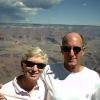the dreaded base to final turn
-
Members Online
- rklems
- Fly Boomer
- Flyler
- bluehighwayflyer
- Marc_B
- 00-Negative
- Dialed In
- 1980Mooney
- goodyFAB
- markgrue
- Rmfriday
- Crawfish
- ta2too
- TangoTango
- WheelPantsOff
- Nippernaper
- kortopates
- Bartman
- Rogerg
- christaylor302
- Hank
- neilpilot
- jma201
- Slick Nick
- Ragsf15e
- LANCECASPER
- Johnny U
- eman1200
- JerryOrlando
- Jackk
- GoDemonDeacons
- N201MKTurbo
- Outflybluesky
- 201er
- jlunseth


Recommended Posts